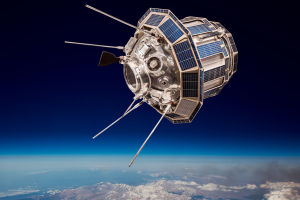The Milky Way Galaxy is the galaxy we inhabit and one of the most captivating celestial objects in the universe.
It is a vast stellar city containing hundreds of billions of stars, along with extensive amounts of gas, dust, and dark matter.
Understanding the Milky Way helps us not only to appreciate the grandeur of the universe but also to explore humanity’s place and future within it. Below, we provide a detailed overview of the structure, composition, formation, and significance of the Milky Way.
The Milky Way Galaxy exhibits a classic spiral shape, with a slightly bulging core region and rotating spiral arms surrounding it. The structure of the Milky Way can be divided into several main parts.
Firstly, there is the core, a densely packed region with a large number of stars, star clusters, and nebulae. This area is a highly concentrated cluster of stars, and it is believed to contain a supermassive black hole with a mass about millions of times that of the Sun. The core is the brightest, most concentrated, and most complex part of the Milky Way, playing a decisive role in its gravitational and dynamic properties.
Next is the galactic disk, which is the main part of the Milky Way and appears in a spiral form. The disk contains most of the galaxy's stars, nebulae, and interstellar gas. It is also home to four major spiral arms: the Orion Arm, the Perseus Arm, the Cygnus Arm, and the Andromeda Arm.
Each spiral arm is rich with young stars and nebulae, making these regions the primary sites of star formation. The shape and structure of the galactic disk make it an ideal area for observing and studying stars and nebulae.
Outside the disk is the galactic halo, a sparse region surrounding the galactic disk, composed mainly of old stars, globular clusters, and dark matter. The halo has a diameter much larger than that of the galactic disk but is less dense. The old stars and globular clusters within the halo are relics of the Milky Way’s formation, while dark matter is inferred to exist based on its gravitational effects.
The Milky Way also has a thick disk, located above and below the galactic disk, composed mainly of old stars and some gas. The thick disk has a lower density compared to the galactic disk but still plays a crucial role in the overall structure of the galaxy. It influences the galaxy’s gravitational field and the distribution of interstellar matter, affecting the rotation of the Milky Way and the movement of its stars.
The formation and evolution of the Milky Way is a complex process involving many principles of astrophysics. Scientists believe that the Milky Way may have formed around 13 billion years ago through a series of steps. In the first few hundred million years after the Big Bang, matter gradually cooled and coalesced into the early galaxies.
These early galaxies contained large amounts of hydrogen, helium, and small quantities of heavier elements. Over time, these galaxies merged through gravitational interactions, gradually forming the present-day Milky Way.
During the galaxy mergers, the Milky Way's core and halo also formed. This process not only increased the number of stars but also contributed to the formation of the Milky Way's core and halo. As further evolution occurred, the Milky Way developed its disk and spiral arms, a process possibly related to the distribution of angular momentum within the galaxy and the dynamics of interstellar gas.
The current Milky Way is undergoing continuous evolution, including star formation, supernova explosions, and gravitational interactions with neighboring galaxies. Additionally, the Milky Way is interacting gravitationally with nearby smaller galaxies and may experience new galaxy mergers.
In summary, the Milky Way is not only our home galaxy but also a key to revealing the mysteries of the universe. Through in-depth research of the Milky Way, we can gain a better understanding of our galaxy as well as a clearer insight into the evolution and structure of the entire universe. Exploring the Milky Way is an important journey in humanity’s quest to understand the cosmos.


